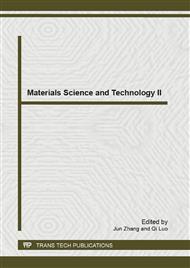p.705
p.713
p.717
p.721
p.727
p.733
p.739
p.744
p.749
Research on the Maximum Riveting Force Based on Theory of Compression Instability
Abstract:
The riveting joint is the main connection to fasten two thin-walled sheet-metal parts in aircraft assembly. As one of important parameters in riveting process, the riveting force is mostly determined by the experience and experiments in actual production, lack of theoretical basis supported. This paper researched the maximum allowed value of riveting force in the elastic deformation stage of riveting process. Based on the theory of compression instability, the mathematics model of relationship among rivets diameter, rivet holes diameter and maximum riveting force was built. Then, by using the software for finite element analysis-ABAQUS, the instance of riveting process simulation was made. Finally, the result of instances simulation was compared with the mathematics model. The comparison shows that the mathematics model based on the theory of compression instability is effective and correct.
Info:
Periodical:
Pages:
744-748
Citation:
Online since:
July 2013
Authors:
Keywords:
Price:
Сopyright:
© 2013 Trans Tech Publications Ltd. All Rights Reserved
Share:
Citation:


